Formed by the Ocean
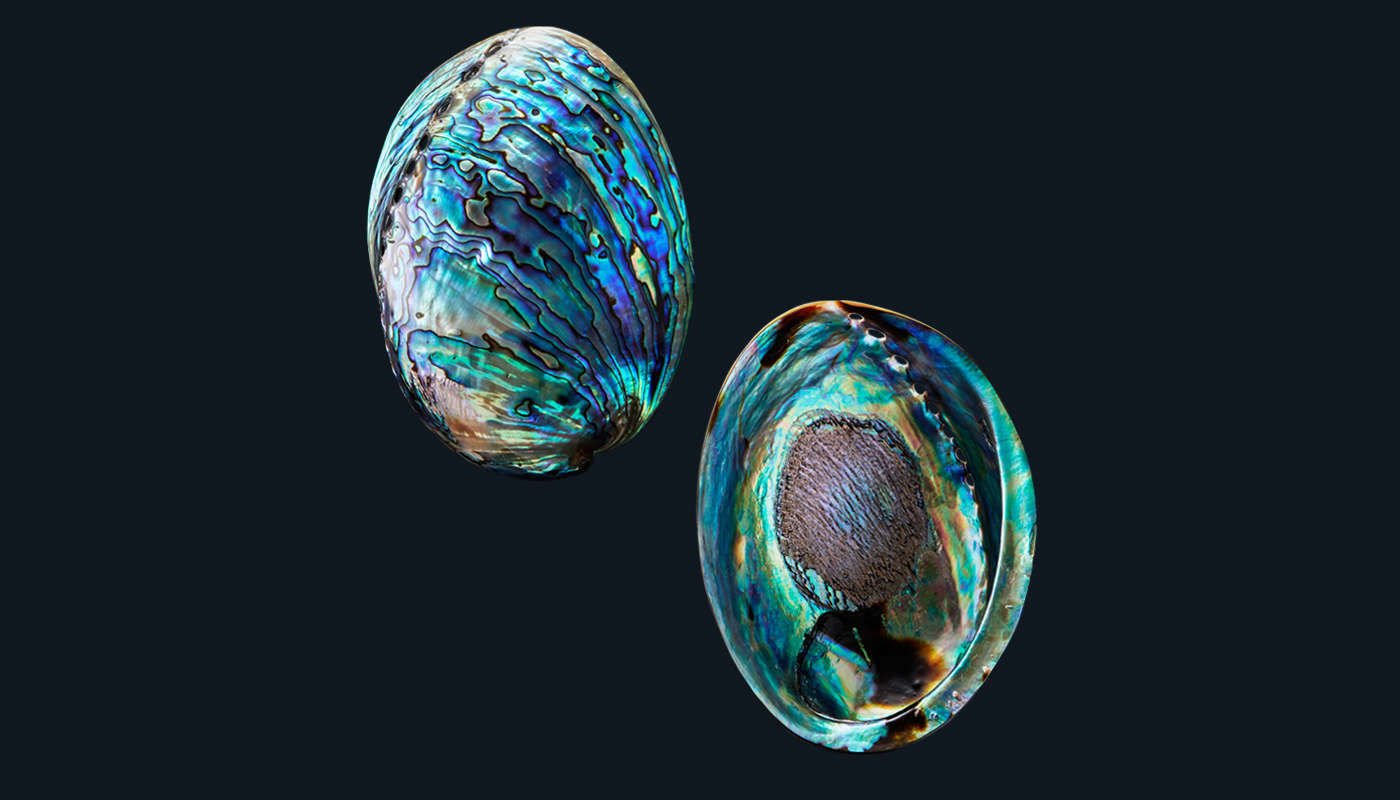
New Zealand Abalone
New Zealand Abalone
Haliotis iris
Unique to New Zealand, this shell is harvested from southern coastlines home to great white sharks. Also known as blackfoot pāua, New Zealand Abalone is the most colourful abalone shell. Its iridescent nacre features various blues and greens with flashes of pink and purple.
Once discovered by free-divers in cold waters, these precious shells are loosened by hand. Most New Zealand Abalone divers wear data loggers to record their area of harvest, and quantities brought to shore are limited by the Total Allowable Commercial Catch (TACC) set by the Ministry of Primary Industries. This quota is updated annually with guidance from industry research groups to ensure sustainability.
About 30% of our New Zealand Abalone comes from the Chatham Islands. This particular environment creates softer shells with a stronger blue. Our Riverton studio processes over 200 tonnes of New Zealand Abalone shell annually – about 80% of New Zealand's harvest for this species.Designers have used New Zealand Abalone in decorative inlays for luxury homes and restaurants. Along with the shell, pearls from this species are featured in textiles and jewellery. New Zealand Abalone shell is graded on size, thickness, colour, and worm damage.
Check our Range of Pāua Grades
Download our Sustainability Statement

New Zealand Abalone
New Zealand Abalone
Haliotis iris
Unique to New Zealand, this shell is harvested from southern coastlines home to great white sharks. Also known as blackfoot pāua, New Zealand Abalone is the most colourful abalone shell. Its iridescent nacre features various blues and greens with flashes of pink and purple.
Once discovered by free-divers in cold waters, these precious shells are loosened by hand. Most New Zealand Abalone divers wear data loggers to record their area of harvest, and quantities brought to shore are limited by the Total Allowable Commercial Catch (TACC) set by the Ministry of Primary Industries. This quota is updated annually with guidance from industry research groups to ensure sustainability.
About 30% of our New Zealand Abalone comes from the Chatham Islands. This particular environment creates softer shells with a stronger blue. Our Riverton studio processes over 200 tonnes of New Zealand Abalone shell annually – about 80% of New Zealand's harvest for this species.Designers have used New Zealand Abalone in decorative inlays for luxury homes and restaurants. Along with the shell, pearls from this species are featured in textiles and jewellery. New Zealand Abalone shell is graded on size, thickness, colour, and worm damage.
Black Mother of Pearl
Pinctada margaritifera
Sustainably farmed in the remote Tahitian and Cook Island lagoons, this black lipped oyster shell, with its lustrous peacock colouring, is bred to grow the world renowned mystical black pearls. Some would say it is the black beauty of the Ocean.
These shells begin their lives in a hatchery before going into the lagoons. Historically each shell underwent two or three seedings before being harvested, however a recent change in operating practices has meant most Luméa Black Mother of Pearl shells now only go through one seeding process before they are harvested. The resulting shells tend to be smaller and thinner, but still have the beautiful vibrant peacock colouring.
About 90% of Luméa Black Mother of Pearl shells come from Tahitian pearl farms. The pearl farms are nestled among the many atolls of Tahiti and the best shells are from the most remote Tahitian islands in the Rikitea group. These shells have to make a long journey in small boats to the main island for grading and export. The small Cook Island lagoon of Manahiki offers small quantities also.
Due to its neutral darker colouring, designers have used Black Mother of Pearl shells largely for interior decoration in the form of tiles and paneling and in the fashion industry for high-end jewellery or pearl shell buttons.
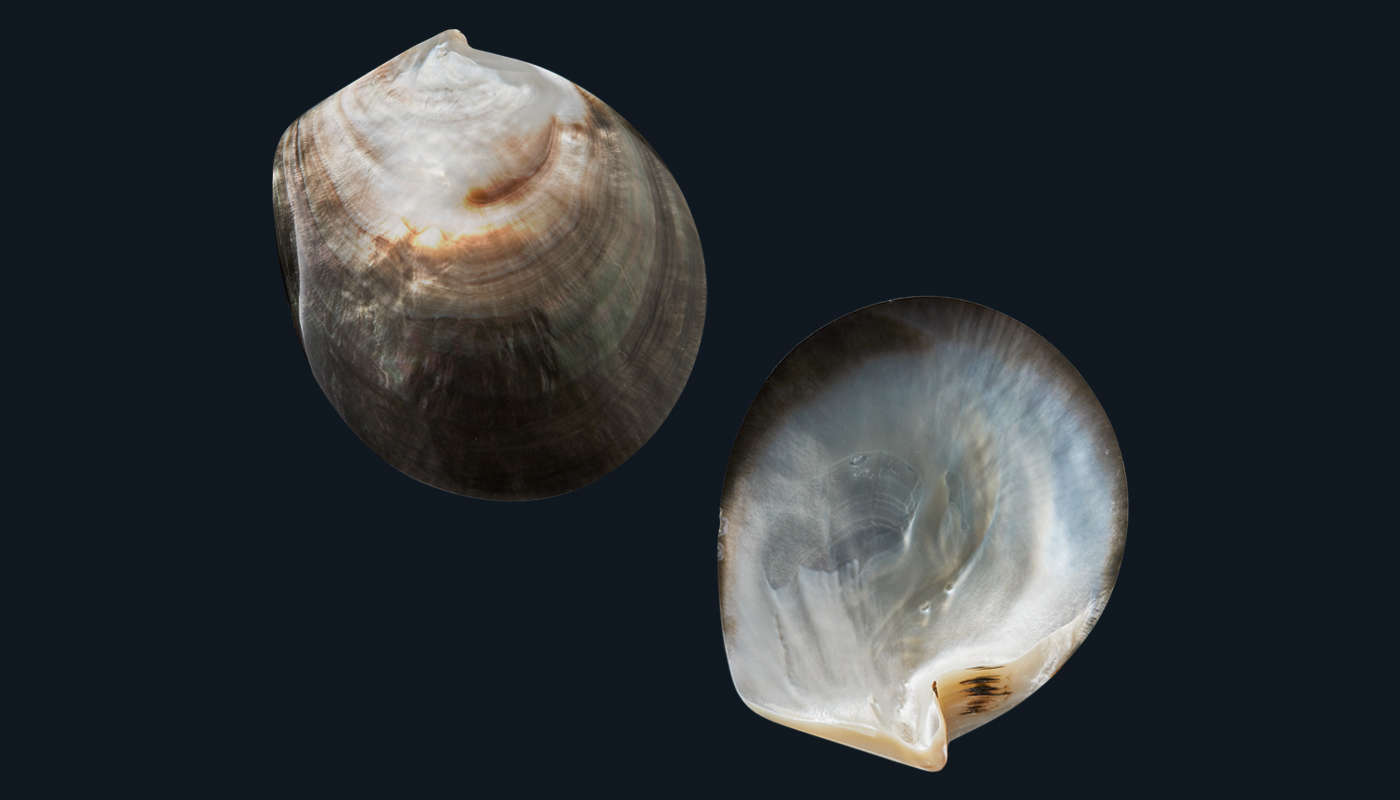
Black Mother of Pearl

Black Mother of Pearl
Black Mother of Pearl
Pinctada margaritifera
Sustainably farmed in the remote Tahitian and Cook Island lagoons, this black lipped oyster shell, with its lustrous peacock colouring, is bred to grow the world renowned mystical black pearls. Some would say it is the black beauty of the Ocean.
These shells begin their lives in a hatchery before going into the lagoons. Historically each shell underwent two or three seedings before being harvested, however a recent change in operating practices has meant most Luméa Black Mother of Pearl shells now only go through one seeding process before they are harvested. The resulting shells tend to be smaller and thinner, but still have the beautiful vibrant peacock colouring.
About 90% of Luméa Black Mother of Pearl shells come from Tahitian pearl farms. The pearl farms are nestled among the many atolls of Tahiti and the best shells are from the most remote Tahitian islands in the Rikitea group. These shells have to make a long journey in small boats to the main island for grading and export. The small Cook Island lagoon of Manahiki offers small quantities also.
Due to its neutral darker colouring, designers have used Black Mother of Pearl shells largely for interior decoration in the form of tiles and paneling and in the fashion industry for high-end jewellery or pearl shell buttons.
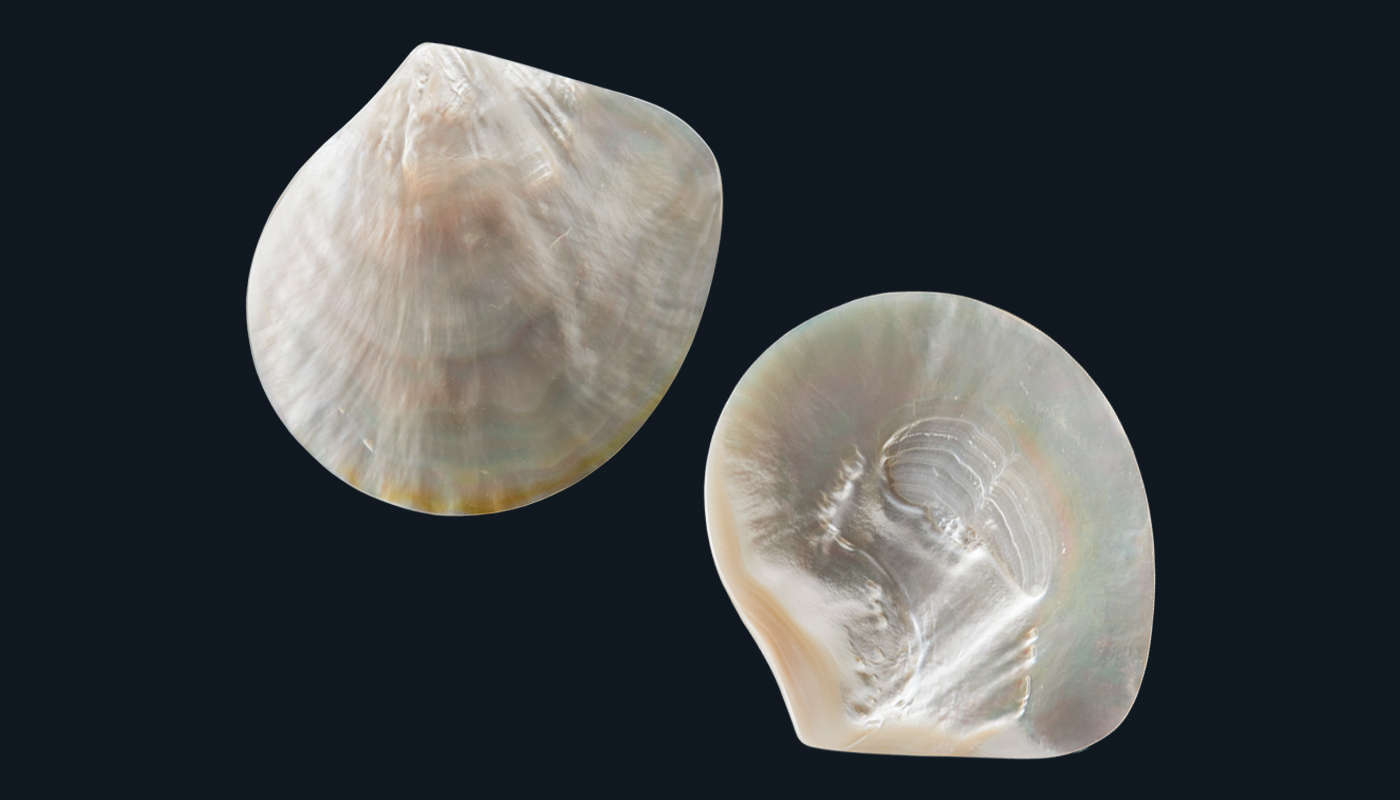
White Mother of Pearl
White Mother of Pearl
Pinctada maxima
In the remote shores of Northern Australia, the most treasured of the Mother of Pearl oysters thrive. These warm, crystal clear turquoise waters nurture and grow the sought after White South Sea Pearls. The lustrous pearly white colour of the shells reflects the pristine natural environment in which they are formed. When the layers of pure white nacre catch the light, the pearlescent qualities of this oyster allow the eye to see subtle pinks amongst the shells strong natural lustre.
The Pinctada maxima oyster is the largest and rarest of all the pearl oysters. The shells are either harvested from the wild under strict regulations or bred in a hatchery before being taken to the pearl farms. Most shells will have produced two or three pearls in their life time before they are harvested. This product has a strong story of sustainability - a valuable by-product of the pearling industry with no risk of over harvesting and exploitation. All our suppliers for this shell are members of the Pearl Producers Association which holds MSC certification on behalf of its licensees for the Pinctada maxima fishery.
After the global financial crisis in 2008 the demand for pearls reduced rapidly causing some farms to close, decreasing the shell harvest and availability by about 50%.
Australian White Mother of Pearl shells are sought after by jewellers, watchmakers, furniture makers, interior and fashion designers.
White Mother of Pearl shell is commonly used for Mother of Pearl buttons, Luméa shell veneers, shell tiles, jewellery parts and inlay blanks.
Download our Sustainability Statement PDF

White Mother of Pearl
White Mother of Pearl
Pinctada maxima
In the remote shores of Northern Australia, the most treasured of the Mother of Pearl oysters thrive. These warm, crystal clear turquoise waters nurture and grow the sought after White South Sea Pearls. The lustrous pearly white colour of the shells reflects the pristine natural environment in which they are formed. When the layers of pure white nacre catch the light, the pearlescent qualities of this oyster allow the eye to see subtle pinks amongst the shells strong natural lustre.
The Pinctada maxima oyster is the largest and rarest of all the pearl oysters. The shells are either harvested from the wild under strict regulations or bred in a hatchery before being taken to the pearl farms. Most shells will have produced two or three pearls in their life time before they are harvested. This product has a strong story of sustainability - a valuable by-product of the pearling industry with no risk of over harvesting and exploitation. All our suppliers for this shell are members of the Pearl Producers Association which holds MSC certification on behalf of its licensees for the Pinctada maxima fishery.
After the global financial crisis in 2008 the demand for pearls reduced rapidly causing some farms to close, decreasing the shell harvest and availability by about 50%.
Australian White Mother of Pearl shells are sought after by jewellers, watchmakers, furniture makers, interior and fashion designers.
White Mother of Pearl shell is commonly used for Mother of Pearl buttons, Luméa shell veneers, shell tiles, jewellery parts and inlay blanks.
Trochus
Tectus niloticus
Growing naturally on isolated atoll reefs throughout the Indo-Pacific oceans, this sea snail has a triangular or conical spiraling shape and a camouflaged exterior allowing it to blend into the bright coral it grows alongside. The commercial Trochus snail prefers the warm waters found in these equatorial regions. Luméa Trochus shells are prized for their creamy white pearlescent colouring. The spiraling nacre which protects the sea snail is thick and strong, perfect for processing.
Collected from the bottom of the atoll reefs by local families free diving, there is a legal minimum catch size of 8 cms in diameter. The families collect them as a subsistence food source, the shell also providing a vital source of income for these local fishermen. The money from the shells allows them to buy fuel for their small boats, solar panels for their homes, educate their children, and get medical help. The local people have strong values around the sustainability of the Trochus resource - they are caretakers of the ocean that surrounds them for future generations to enjoy.
We work closely with our local partners who have years of experience gathering shells from the small and remote ocean dependent villages in the many islands of Papua New Guinea, Solomon Islands, Tahiti and New Caledonia. Luméa exports about 400 to 500 tonne of Trochus shell annually, graded into 3 sizes. It is mainly used for pearl shell buttons on high end clothing due to the natural lustre and strength of the nacre and for beads. Some shells are polished whole, keeping their conical shape, for ornamental decoration. Trochus also makes excellent shell chip.
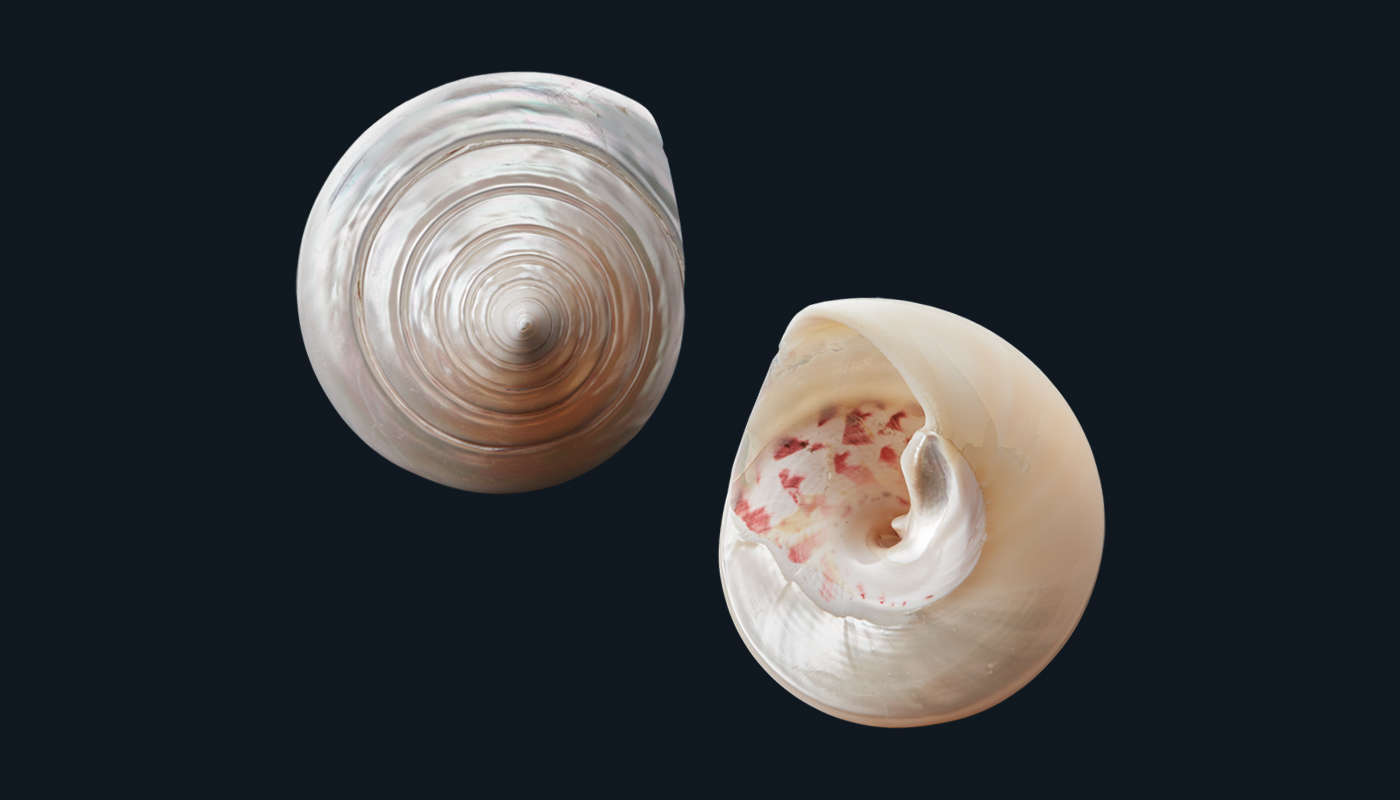
Trochus

Trochus
Trochus
Tectus niloticus
Growing naturally on isolated atoll reefs throughout the Indo-Pacific oceans, this sea snail has a triangular or conical spiraling shape and a camouflaged exterior allowing it to blend into the bright coral it grows alongside. The commercial Trochus snail prefers the warm waters found in these equatorial regions. Luméa Trochus shells are prized for their creamy white pearlescent colouring. The spiraling nacre which protects the sea snail is thick and strong, perfect for processing.
Collected from the bottom of the atoll reefs by local families free diving, there is a legal minimum catch size of 8 cms in diameter. The families collect them as a subsistence food source, the shell also providing a vital source of income for these local fishermen. The money from the shells allows them to buy fuel for their small boats, solar panels for their homes, educate their children, and get medical help. The local people have strong values around the sustainability of the Trochus resource - they are caretakers of the ocean that surrounds them for future generations to enjoy.
We work closely with our local partners who have years of experience gathering shells from the small and remote ocean dependent villages in the many islands of Papua New Guinea, Solomon Islands, Tahiti and New Caledonia. Luméa exports about 400 to 500 tonne of Trochus shell annually, graded into 3 sizes. It is mainly used for pearl shell buttons on high end clothing due to the natural lustre and strength of the nacre and for beads. Some shells are polished whole, keeping their conical shape, for ornamental decoration. Trochus also makes excellent shell chip.
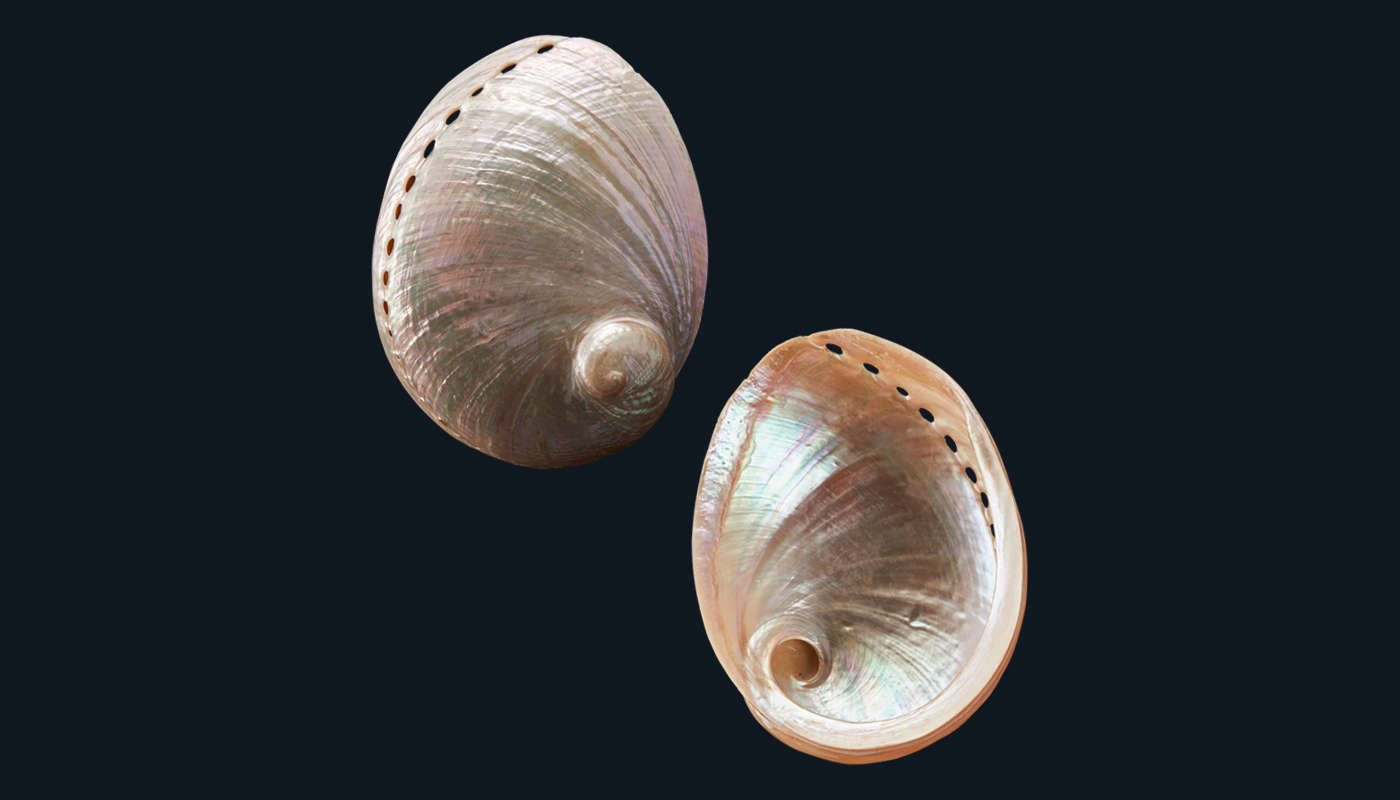
Australian Abalone
Australian Abalone
Haliotis laevigata
The creamy coloured Australian Abalone has two wild commercial species, Green Lip and Black Lip, as well as the small farmed hybrid abalone. Their delicious meat is a delicacy in Asian countries. Australia has the largest wild caught commercial abalone fishery in the world. Strictly controlled regulations including a total commercial harvest limit ensure overfishing does not occur and the fishery remains sustainable.
Wild Green Lip is found in the cool, shark infested waters around the South Coast of Australia and Tasmania. The strong ocean currents in this area provide the ideal environment for this mollusc to thrive. Experienced abalone divers carefully dislodge the shells one by one from the rocks they cling to.
The larger Green-lip are often used for inlay in wooden handicraft furniture and as jewellery blanks.
The Black-lip are a wavy corrugated type shell which is better suited to use in traditional chinese medicines.

Australian Abalone
Australian Abalone
Haliotis laevigata
The creamy coloured Australian Abalone has two wild commercial species, Green Lip and Black Lip, as well as the small farmed hybrid abalone. Their delicious meat is a delicacy in Asian countries. Australia has the largest wild caught commercial abalone fishery in the world. Strictly controlled regulations including a total commercial harvest limit ensure overfishing does not occur and the fishery remains sustainable.
Wild Green Lip is found in the cool, shark infested waters around the South Coast of Australia and Tasmania. The strong ocean currents in this area provide the ideal environment for this mollusc to thrive. Experienced abalone divers carefully dislodge the shells one by one from the rocks they cling to.
The larger Green-lip are often used for inlay in wooden handicraft furniture and as jewellery blanks.
The Black-lip are a wavy corrugated type shell which is better suited to use in traditional chinese medicines.
Green Turban Snail
Turbo marmoratus
The majestic Green Turban Snails (Turbo Marmoratus) are found in the tropical oceans around Japan and the Pacific; the different natural environments creating unique characteristics. The shell of this large sea snail features a lustrous white pearly nacre with hints of greens and pinks.
Luméa Green Turban shells are collected by local free divers from coral reefs. Although they can be easy to spot, due to their size and weight, it requires great skill and strength to dislodge and get them to the surface.
Due to their significant size, these shells are often polished in their whole form for trophy type ornaments, or used for its pearlescent qualities as inlay in furniture, complementing dark natural woods.
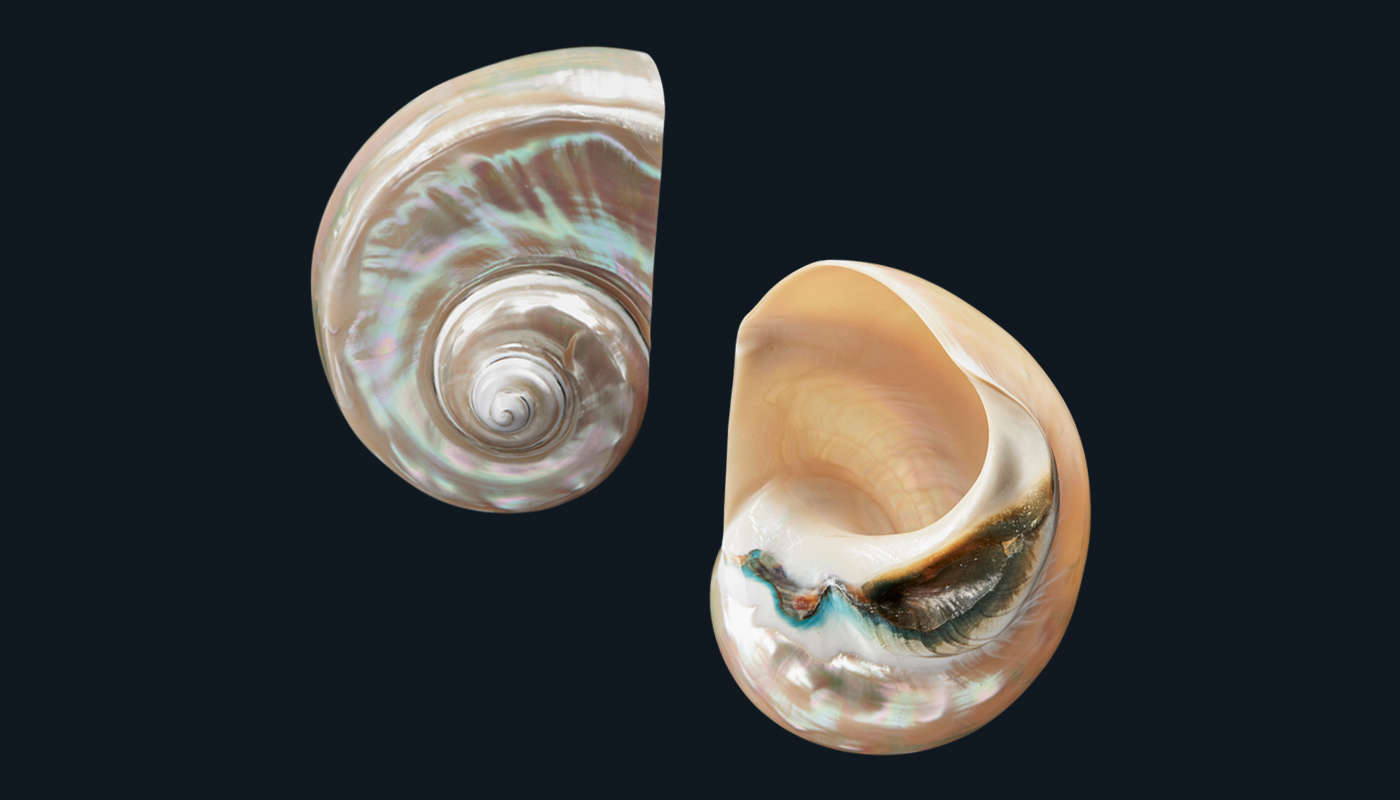
Green Turban Snail

Green Turban Snail
Green Turban Snail
Turbo marmoratus
The majestic Green Turban Snails (Turbo Marmoratus) are found in the tropical oceans around Japan and the Pacific; the different natural environments creating unique characteristics. The shell of this large sea snail features a lustrous white pearly nacre with hints of greens and pinks.
Luméa Green Turban shells are collected by local free divers from coral reefs. Although they can be easy to spot, due to their size and weight, it requires great skill and strength to dislodge and get them to the surface.
Due to their significant size, these shells are often polished in their whole form for trophy type ornaments, or used for its pearlescent qualities as inlay in furniture, complementing dark natural woods.
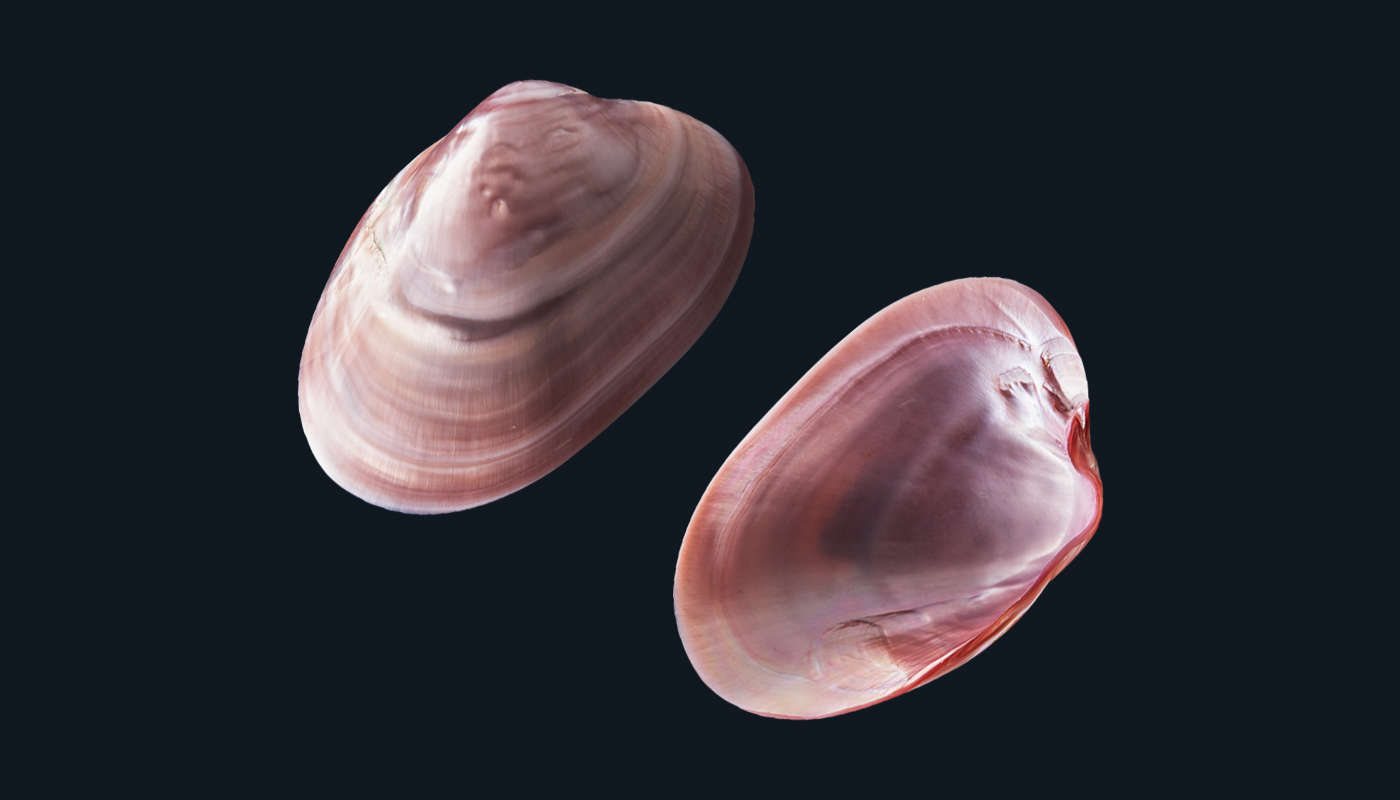
Pink Mother of Pearl
Pink Mother of Pearl
Potamilus alatus
Found in the mighty Mississippi River, USA, the history of this wild shell dates back to the late 1800’s and the pioneers of the pearl farming industry itself. The Japanese later became the largest users of these shells, cutting them to make high quality pearl nuclei to supply pearl farmers in the Pacific regions.
Luméa Pink Mother of Pearl shells are sought after for their deep purple-pink colouring on the inside of the shell, and when the outside layer is removed a lighter pink colour is revealed.
Available as whole shells and shell pieces.

Pink Mother of Pearl
Pink Mother of Pearl
Potamilus alatus
Found in the mighty Mississippi River, USA, the history of this wild shell dates back to the late 1800’s and the pioneers of the pearl farming industry itself. The Japanese later became the largest users of these shells, cutting them to make high quality pearl nuclei to supply pearl farmers in the Pacific regions.
Luméa Pink Mother of Pearl shells are sought after for their deep purple-pink colouring on the inside of the shell, and when the outside layer is removed a lighter pink colour is revealed.
Available as whole shells and shell pieces.
Chilean Abalone
Concholepas concholepas
A creamy coloured shell from the abalone farms of Chile. Also grown for its delicious abalone meat, it is similar in colour, size and thickness to the farmed Australian abalone, however with a slightly more apricot coloured skin on the outside. This shell is used mostly for wooden inlays and thinner shell buttons.
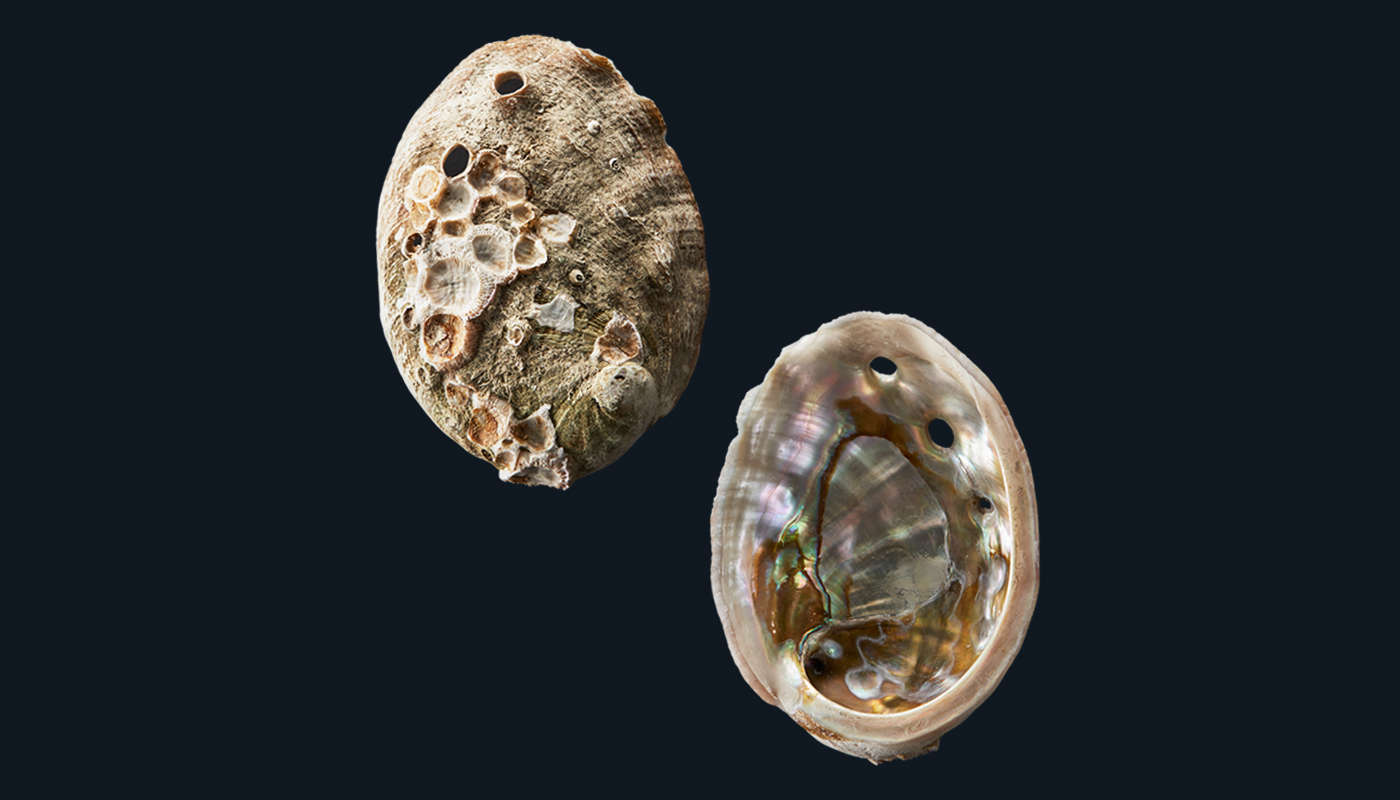
Chilean Abalone

Chilean Abalone
Chilean Abalone
Concholepas concholepas
A creamy coloured shell from the abalone farms of Chile. Also grown for its delicious abalone meat, it is similar in colour, size and thickness to the farmed Australian abalone, however with a slightly more apricot coloured skin on the outside. This shell is used mostly for wooden inlays and thinner shell buttons.
Tell us about your project...
Your project is unique, so we provide personalised advice before delivering worldwide from our studio in New Zealand.
Luméa products are made from natural shell with a variety of factors that affect form and function. If you can’t find the right product from within our range, then talk to us about our custom design service. We love to experiment and collaborate with our partners to create unique solutions.